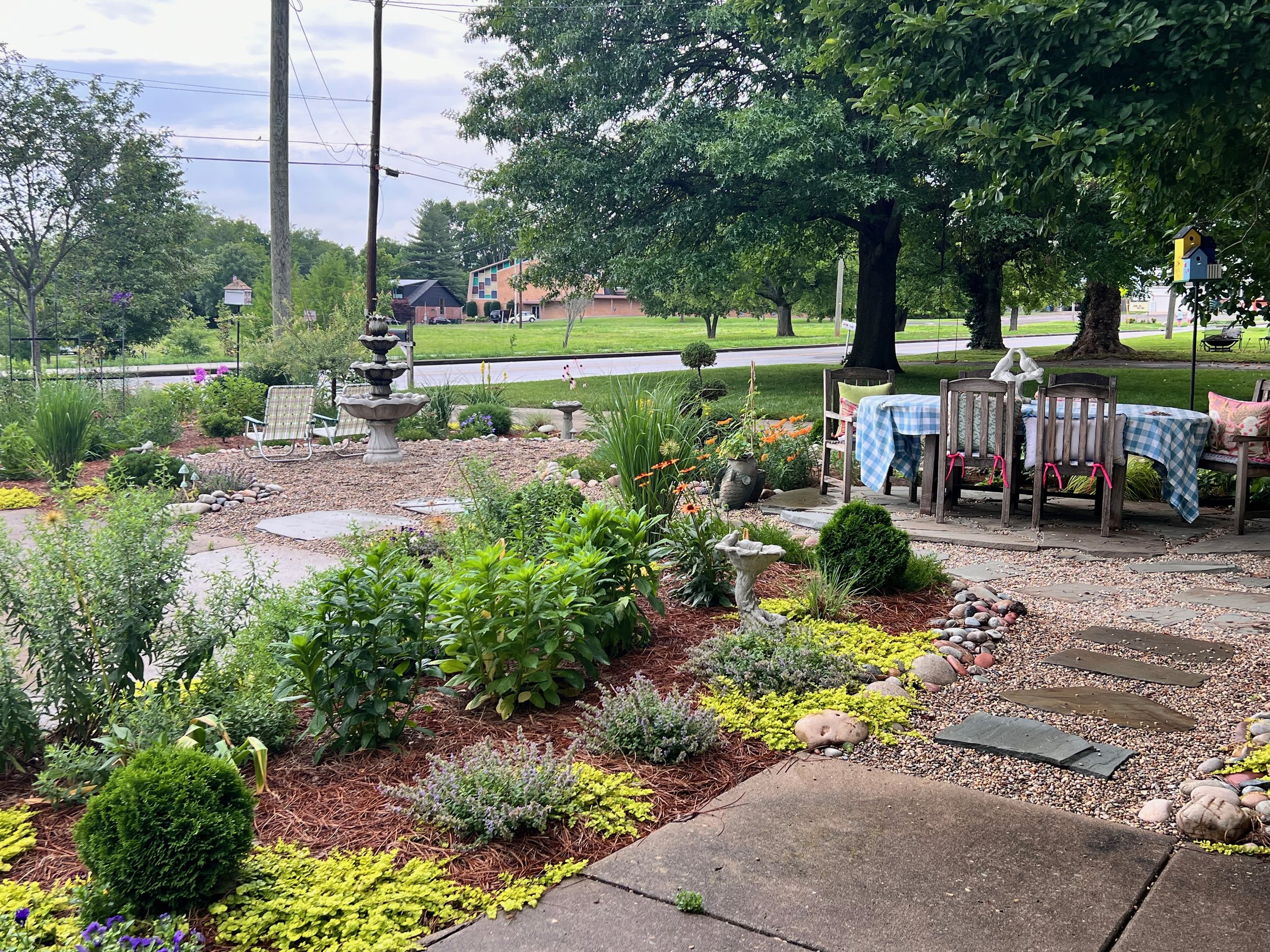As Seen in Country Living: Why Outdoor Spaces Are Finally Moving Beyond the Matchy-Matchy Set
In a recent Country Living feature on outdoor furniture trends, I was honored to be included as a voice in a conversation I’ve been having with my clients for years now. The topic? The soulful rebellion against “sterile” outdoor design.
"My clients are increasingly moving away from modern, minimalist aesthetics and are instead embracing traditional furniture designs."
— Clare Horne, The Grass Girl
There’s a cultural shift happening in garden and outdoor design—and it’s not just about aesthetics. It’s about emotion. Memory. Presence. A sense of place that reflects who you are, not what the showroom says you should buy.
This shift mirrors something deeper I see with my clients in Nashville and across the South: a desire for connection—to history, to texture, to the stories layered into materials that age well and furniture that has soul.
The End of the Teak Set Era
For years, outdoor furniture followed a simple formula: buy the set. A uniform table, matching chairs, maybe a couple of lounge pieces in the same material and finish. Done.
But here’s the thing: our gardens aren’t showroom floors. They’re extensions of our inner world. And increasingly, people want them to feel that way.
A teak dining table flanked with metal-framed French-style bistro chairs. A vintage wicker settee with mismatched cushions layered in antique indigo textiles. A mossy stone bench paired with a wrought iron café table tucked under a tree.
These are the kinds of curated compositions I’m seeing clients crave—and that I’m most inspired to create.
Why Mix-and-Match Outdoor Furniture Matters
It adds soul and patina.
Uniformity can feel lifeless. Mixing materials—like weathered wood, iron, wicker, or stone—adds texture, time, and story.It honors the architecture.
A farmhouse, a historic cottage, or a modern Southern home each asks for something different. A mix allows you to respond authentically to the architecture, not override it.It’s often more cost-effective.
You don’t need to buy a $12,000 set from a luxury brand to have a chic garden. You can thrift, antique, upcycle, and still create something elevated and luxurious in feel.It reflects how people actually live.
Most of us collect over time. We inherit chairs. We find a table we love. This natural curation process is far more human—and more charming—than the “one-click patio.”
What I Recommend to Clients
When helping clients design outdoor spaces that feel gathered and grounding, I start with a few principles:
Start with one piece you love.
Maybe it’s a vintage dining table, or a modern sectional with clean lines. Build around that, not the catalog page.Play with scale and shape.
A low-profile woven bench next to a high-back wood armchair adds dimension. Don’t be afraid of variation.Layer in texture.
I use iron urns, handwoven outdoor rugs, ceramic stools, and natural stone to add tactile depth to every corner.Use vintage when possible.
I often source from architectural salvage yards, antique shops, and local artisans. Outdoor furniture doesn’t have to be new to be durable—it just needs to be quality and cared for.Consider the elements.
Yes, teak is durable—but so is powder-coated metal, weather-resistant wicker, and even stone. The trick is choosing materials appropriate for your climate and covering exposed pieces seasonally.
A Recent Client Garden That Embodied This Shift
One of my recent Nashville clients came to me with a blank backyard canvas and an antique iron café table passed down from her grandmother. She asked: “Can this stay?”
Not only did it stay—it became the centerpiece.
We anchored the table under a Japanese maple, surrounded it with slipcovered rattan chairs, added two white cast stone planters overflowing with native ferns, and built a custom flagstone pad that extended into a soft pea gravel terrace. She now calls it her “thinking garden.” And yes, she writes there every morning.
No matching set could’ve captured her history, her taste, or that soft, slow feeling of being home.
This Isn’t Just a Trend—It’s a Return
What Country Living spotlighted isn’t just a passing aesthetic moment. It’s part of a broader return I’m seeing across design disciplines—a return to meaningful, storied, non-mass-produced beauty.
In my own work, I think of it as gardening with memory. Designing with a hand on the past, an eye to the future, and both feet firmly planted in the real, rich, living now.
Want to Create a Collected Outdoor Space of Your Own?
Whether you’re dreaming of a lush garden room, a courtyard with layered vintage charm, or a fireside nook that invites slow summer evenings, I’d love to help bring it to life.
You can explore more of my garden design work here, or reach out to begin a consultation.
And if you haven’t yet, be sure to read the Country Living article right here.

